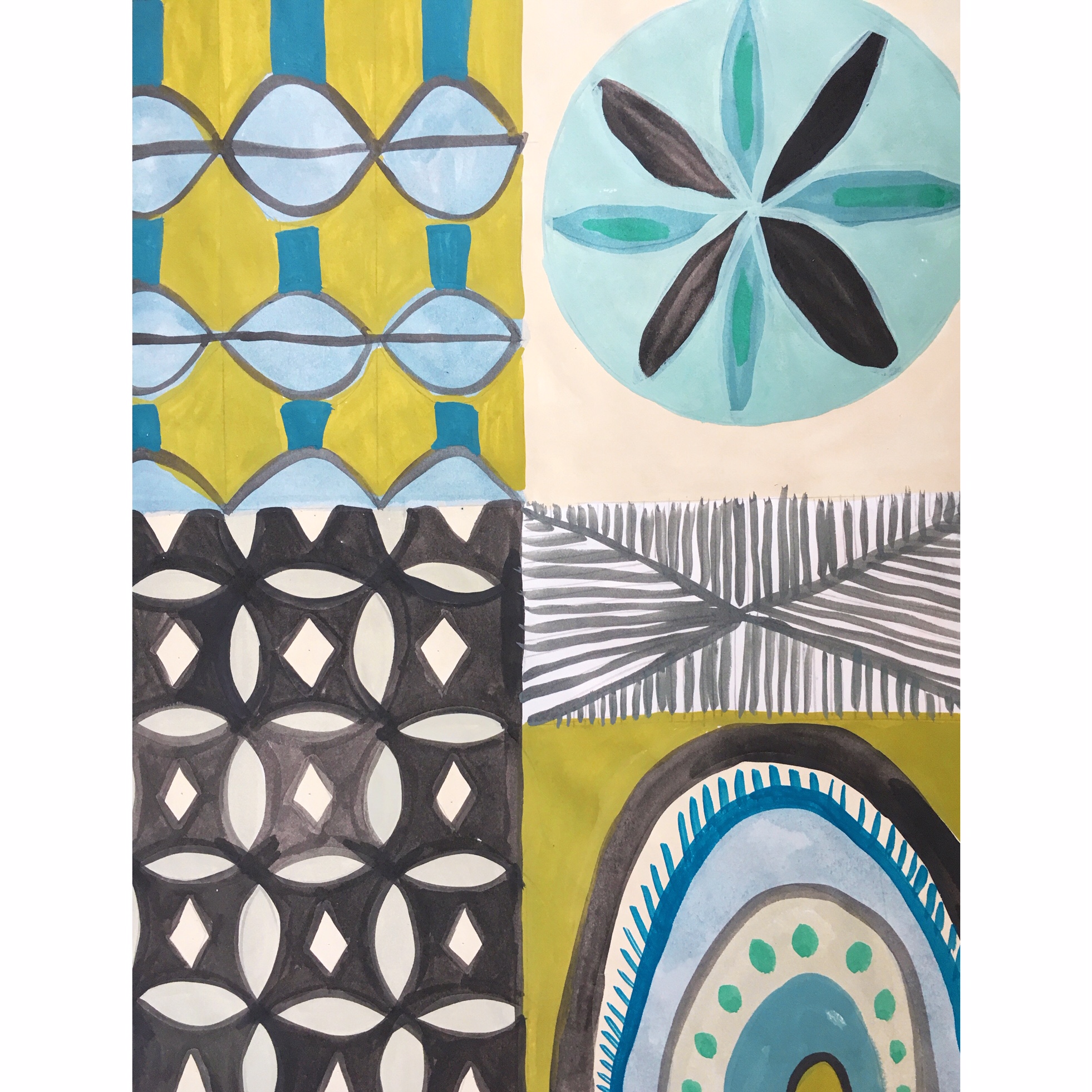Sketchbook Prompt #7 - Pattern Play
/Sketchbook Prompt #7 - Pattern Play
If you are familiar with me and my work, then you probably know how much I love patterns. I have been fascinated with patterns for most of my life, I would say for at least 25 years I have been studying them. When I go to my sketchbook and decide to draw or paint patterns I usually reference something at first. This gives me a starting off point. I may pick up a blanket that has a great weave and study it, or a recent magazine showing off new Moroccan tiles, I look at old patterns from all over the world; you can find them in books or via a google search. A lot of times I photograph things I see so that I can look at them later. The important thing is to be aware that patterns are everywhere. When you start to notice and collect them in a matter of speaking you will have your own array to draw from.
One of the reasons I like to draw/paint patterns is that I reference them later to go into other works. I often include patterns in my larger paintings, or in a product design, but sometimes I just enjoy how freeing they feel.
You can either devote an entire page to a pattern, or divide your sketchbook page into sections and fill those in with different patterns. In those sections you can make different patterns, with different colors or similar and see how they work next to each other.
Creating patterns can be a great place to play with different color palettes. I adore color and am always looking to see what happens when you place the colors next to each other but in a different environment. Consider your primary colors; Red, Blue, Yellow and then look to your complimentary colors. The complimentary colors really love each other. You have Red and green, Blue and orange and Yellow and purple. These colors really grab your attention. So think about how you can pair colors in that range and see what happens.
Perhaps you are trying to evoke a mood, and you are wanting something warm. Play with colors in the red,orange, pink family. If they feel to bright I usually tone them down with Arcyla Gouache grey #3.
Materials:
Sketchbook, I think a sketchbook works so much better over loose paper so that you can be sure to have it later. I cannot tell you how many times I have lost loose drawings/paintings.
Materials to sketch with. I recommend a #2 pencil. Some really great pencils out there are Palomina Blackwing and Caran d’Ache graffwood. You can order these online at Blick Art Supplies.
I recommend using a brush and ink after you get down your general sketch. You may want to use watercolor for something more transparent or gouache for something more opaque. I use Acryla gouache and sometimes I use the Winsor Newton watercolor travel set.
There are a lot of brushes out there, I recommend a sable brush. I like Winsor Newton series #7 and Utrecht’s brand brush that is green. I use a variety of sizes from 1 - 10. A #1 will give you the smallest, thinest line and 10 will get bigger. You can still get a small(ish) stroke with the 10 if you only use the tip.
Experiment and have fun, enjoy your sketchbook. Remember if the whole page seems daunting, divide it into fours. Then you have a more approachable space. If rectangles seem to controlling draw large circles to fill in with patterns. Try and make it fun and suit your personality.
Here I played with complimentary colors. Green and Red don’t have to feel like Christmas if you don’t want them to be.
I wanted to limit my color so I only used a couple shades of green and a light gray.
The page was divided into 4 equal parts.
A pattern doesn’t have to always repeat on the page, it can allude to a repetition that might continue after the edge of the page has stopped.





